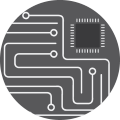
Welcome to Sensor Planet.
My name is Larry Wilson. I help companies improve their activity by building smart IoT devices that solve serious business challenges.
Here are the services that I am currently offering.
 ARCHITECTURE DESIGN
ARCHITECTURE DESIGN
I design IoT solutions that utilize sensors, actuators and smart devices which connect to mobile applications, web applications and the cloud using a custom gateway.
 DEVICE PROGRAMMING
DEVICE PROGRAMMING
I code full Internet of Things applications from scratch. I can also get involved at any stage of the project, helping your team complete it.
 TESTING AND OPTIMIZATION
TESTING AND OPTIMIZATION
I've got the skills and the tools that are needed to run extensive IoT solutions tests. I can fix bugs, add new features and/or increase application speed.
IoT ARTICLES AND GUIDES
 Wi-Fi and IoT: Pros, Cons and Alternatives
Wi-Fi and IoT: Pros, Cons and Alternatives
Wi-Fi, the name that is often used to describe the 802.11 protocol, is a short-range wireless communication standard which utilizes the freely available, unlicensed 2.4 GHz frequency band. It is true that several geeks have tried (and many of them succeeded!) to increase Wi-Fi range tenfold by utilizing combinations of custom-built high gain antennas, a variety of cable adapters and powerful signal amplifiers.
While this approach has worked fine, significantly boosting wireless range, it has also increased the required amount of power. Nevertheless, since most network clients were desktop PCs back in 1997, when the first version of the wireless standard was released, power efficiency wasn't a key priority.
So, Wi-Fi can be a great solution for applications where power consumption isn't an issue. An intelligent home security system, which is connected to the mains at all times, can (and should) utilize a wireless network, because it needs to stream large amounts of data. Additionally, Wi-Fi networks are everywhere, and this has the potential to make IoT devices inexpensive and easy to deploy.
 How to Protect Your IoT devices
How to Protect Your IoT devices
Internet of Things gadgets can be really useful. I love the convenience of operating a smart light bulb using my cell phone just like everyone else. Who wouldn't want to be able to set the color of the light in his or her room as he or she desires? However, poorly secured IoT devices continue to cause serious problems. They allow hackers to take control over your gadgets, damage them, and even get you into trouble by using them to attack various websites.
Yes, the problem is that serious! Nevertheless, there are several things that you can do to increase security. Here's what works right now.
1. Use a router which includes a built-in, hardware-based firewall. Don't ever connect your IoT devices straight to the Internet! Your router provides an additional layer of security, because it can block connection requests for undesirable IP addresses.
It also helps to utilize an antivirus which includes a software-based firewall. It's not as efficient as one that uses dedicated hardware components, of course, but it provides an additional layer of security that shouldn't be ignored.
 Getting Started with IoT Development
Getting Started with IoT Development
There has never been a better time to get started as an Internet of Things developer! According to a recent report provided by Gartner, there will be more than 20 billion IoT devices by 2020. That's an increase of over 240% in comparison with 2017, and since the industry is booming, companies need more developers who are able to build the hardware and the software which will ensure that new IoT devices are built and operate properly.
Let's start with the hardware part. Often, this is done by an engineer who is specialized in electronics. Still, if you plan to become a skilled IoT developer, you should be able to build simple projects from the ground up on your own, by making use of already existing boards and sensors.
During the first stage of the project, the developer creates code that is able to read the data which is provided by the sensor(s) and sent to the IoT device. Then, once that the data reading part is completed, the programmer will take care of the code which communicates with the server. Depending on the actual project, there may be a need for some user interface code, which will display the required data for the end-users.
LATEST IoT NEWS
 Best IoT conferences
Best IoT conferences
The Internet of Things industry is very dynamic, so any industry professional must stay up to date. Here are the best IoT conferences that you should attend.
 Dell and Microsoft will deliver a joint IoT solution
Dell and Microsoft will deliver a joint IoT solution
The two companies have joined their forces to help customers deploy their end-to-end IoT solutions faster and keep them secure, while having access to a centralized monitoring system.
 Is .NET a great solution for your Next IoT Project?
Is .NET a great solution for your Next IoT Project?
ASP.NET Core, the free cross-platform and open-source web framework created by Microsoft, is fully compatible with Windows 10 IoT Core. Will this make it the best solution for your next IoT project?